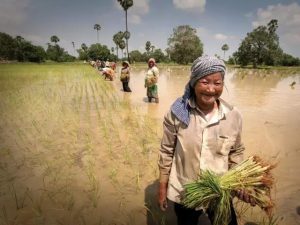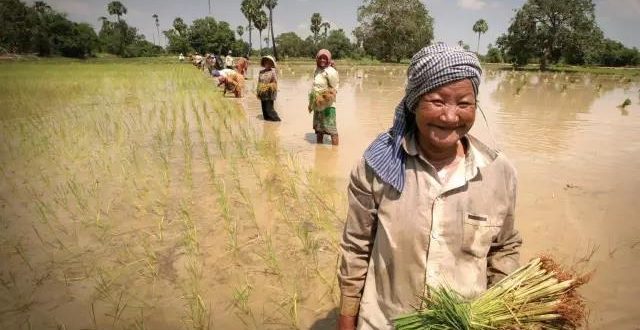Only 5% of Indo-Burma Biodiversity Hotspot Remains, Now What?
If you’ve walked the grounds of Angkor Wat, seen the temples of Bagan, passed through the streets of Vientiane Lao, strolled the beaches of Koh Samui, or floated along Halong Bay, you know the beauty of the Lower Mekong Region.
Extending from China’s southern most provinces, and reaching across the exotic lands of Southeast Asia to the Bay of Bengal, the Gulf of Thailand and the South China Sea, lies the Indo-Burma Biodiversity Hotspot.
Only 5% of the Indo-Burma Biodiversity Hotspot remains in its natural, pristine condition – posing a crisis for the flora and fauna of the region, Asia & the Earth.

Chittagong Hill Tracts in Bangladesh is located within in the Indo-Burma Biodiversity Hotspot.
Photo Credit: CEPF
We hope that through more intensive conservation work and awareness among investors, sustainable development of this region’s economy will flourish alongside the flora and fauna. Overall, GEI believes that in order for the region to be conserved, any investment should be met with serious consideration of all risks and consultation from experts.
A Troubled Treasure of Asia
Spanning over 2 million total square kilometers, the area lives up to its ‘biodiversity hotspot’ title as there are 33 different forms of terrestrial eco-regions (land formations ranging from subtropical forests to mangroves).
Six species of large mammals – like the grey-shanked douc (left) and the Annamite muntjac (right) – have been discovered here in the past 12 years! Plus, ten species of animals – like the Irrawaddy dolphin (left) and Sarus Crane (right) – are endemic, meaning exclusively found, to the Indo-Burma biodiversity hotspot.
The Indo-Burma hotspot is home to about 300 million people, many of whom rely on the environment for their livelihood, engaging in rice patty farming and extensive fishing. Nevertheless, most of the population lives below the poverty line.

A rice paddy farmer in Cambodia.
Photo Credit: Kevin Evans/AusAID
According to the Critical Ecosystem Partnership Fund (CEPF), “The issues of poverty alleviation and biodiversity conservation are inextricably linked.”
As such, there’s ample opportunity for new markets and products to make it big. However, government regulations and policies in the region are not developing as efficiently as the economy is growing and the untamed development is threatening the region.
Threats on the Horizon
In addition to facing a low percentage of pristine ecology and high poverty rates, the Indo-Burma biodiversity hotspot faces a challenge of sustainable development – worsened by by the influx of Chinese investment into the region.
CEPF states that the two biggest threats to the plants and animals in the Indo-Burma Biodiversity Hotspot are:
1. Habitat loss and
2. Overexploitation of plant and animal species.
But importantly, these challenges are intensified by the political and economic situation in the region.
As these countries are developing, they face a host of problems including, but not limited to, corrupt or inefficient governments, unstable populous, extensive investment, desperate locals, and sluggish or unchecked economic growth.
Here’s how this plays out in terms of forest loss in Myanmar
A Case Study
For most of the country’s history, the local people living along Myanmar’s shorelines, on the banks of the Irrawaddy River and up in the northern mountain ranges, relied on the woodland habitats for their livelihood. Villages cut down trees or mangroves for firewood or for construction materials. Logging companies cut down the most profitable trees for export, sometimes illegally.
The Myanmar government transitioned from a police state in 1990, and the country has repeatedly dealt with issues of corruption, ethnic warring, and bribery while countries exploited the natural forests. By the early 2000s forest coverage in Myanmar reduced in size, from 65% to 40%.
With help from GEI and other partners, the logging policies tightened and deforestation began to slow around 2014. In the past two years, local people are gaining access to renewable energy tools to avoid cutting down the trees.
But this is just one biodiversity problem and just one country within the Indo-Burma Biodiversity Hotspot. There’s still a lot of work to be done.
Moving Forward
In order to reverse and correct the path of destruction in the Indo-Burma Biodiversity Hotspot and other ecological regions across the world, diverse stakeholders (i.e. governments, investors, local people, academic and scientific experts and NGOs) need to work together.
Companies looking to invest in a special ecological region – whether they plan to build a resort, access a natural resource, or expand their market – need to consider the environmental and social risks of their projects.
We at GEI, do not encourage extensive investment into this region and, in the case that a project proceeds, advocate for in-depth environmental impact assessment and environmental social impact assessment undertaken by investors. We encourage that “sustainability” be a consistent concern and long-term goal.
And when you travel, please support the most environmentally sound companies when you travel to the tropics. Here’s how: stay in local hotels or homestays, buy locally made souvenirs, be sure to not support any illegal trade (watch out for goods made from ivory, animal products and fancy woods!) and always be responsible with your trash.
Sources:
1. Critical Ecosystem Partnership Fund: Indo-Burma Introductionhttp://www.cepf.net/where_we_work/regions/asia_pacific/indo_burma/Pages/default.aspx
2. Final Assessment of CEPF Investment in the Indo-Burma Hotspot 2008-2013; A Special Report (May 2014) http://www.cepf.net/SiteCollectionDocuments/indo_burma/IndoBurma_FinalAssessmentReport_May2014.pdf
3. International Union for Conservation of Naturehttps://www.iucn.org/content/verge-extinction-look-endangered-species-indo-burma-hotspot
4. Conservation International, Indo-Burma Biodiversity Hotspotshttps://web.archive.org/web/20080704185833/http://www.biodiversityhotspots.org/xp/Hotspots/indo_burma/ 5. Wikipedia, Indo-Burmahttps://en.wikipedia.org/wiki/Indo-Burma

